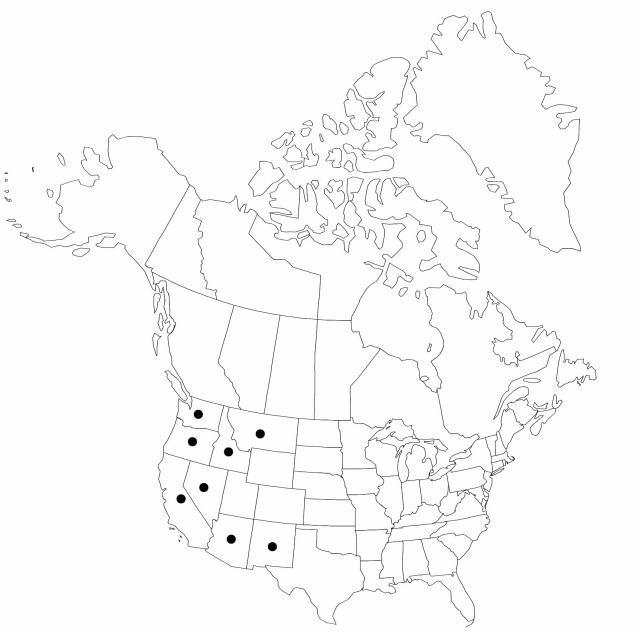Eleocharis bella
Rhodora 31: 201. 1929.
Plants annual, rarely perennial, usually densely tufted; rhizomes rarely evident, 0.2–0.3 mm thick, internodes 1–5 mm, scales not evident. Culms often ascending or spreading, 4-angled or sometimes terete, sometimes sulcate, 1–7 cm × 0.2–0.3 mm, soft to firm. Leaves: sheaths stramineous, distal sheaths often splitting abaxially, slightly inflated distally, oblique, apex acute. Spikelets ovoid, 1.5–4 × 0.8–2 mm, apex acute; floral scales 4–15, 8 per mm of rachilla, colorless or reddish brown, midrib region green, ovate-lanceolate, not folded lengthwise, 1–1.5 × 0.5–0.7 mm, mibrib obscure to somewhat keeled, apex narrowly acute to acuminate, slightly recurved. Flowers: perianth bristles absent; anthers 0.3–0.5 mm. Achenes with angles and longitudinal ridges ca. 6–10, rather prominent, broadly ovoid, less than 2 times longer then wide, (0.55–)0.65–0.75 × 0.3–0.4 mm, apex blunt, trabeculae distinct, 20–30. Tubercles grayish, mostly appressed, pyramidal, often depressed, 0.1–0.2 × 0.1–0.25 mm.
Phenology: Fruiting spring–summer.
Habitat: Bare, often drying soil of stream alluvium, lake margins, wet meadows
Elevation: 200–2900 m
Distribution

Ariz., Calif., Idaho, Mont., Nev., N.Mex., Oreg., Wash., Mexico (Chihuahua).
Discussion
Eleocharis bella and E. acicularis seem to be amply distinct; putative hybrids are unknown. The occasional plants of E. bella with evident rhizomes, which include the type, are otherwise identical to plants apparently without rhizomes. Eleocharis bella is very similar to E. cancellata. There is an Illinois collection from Peoria in 1901, from the alluvial banks of the Illinois River.
Selected References
None.
